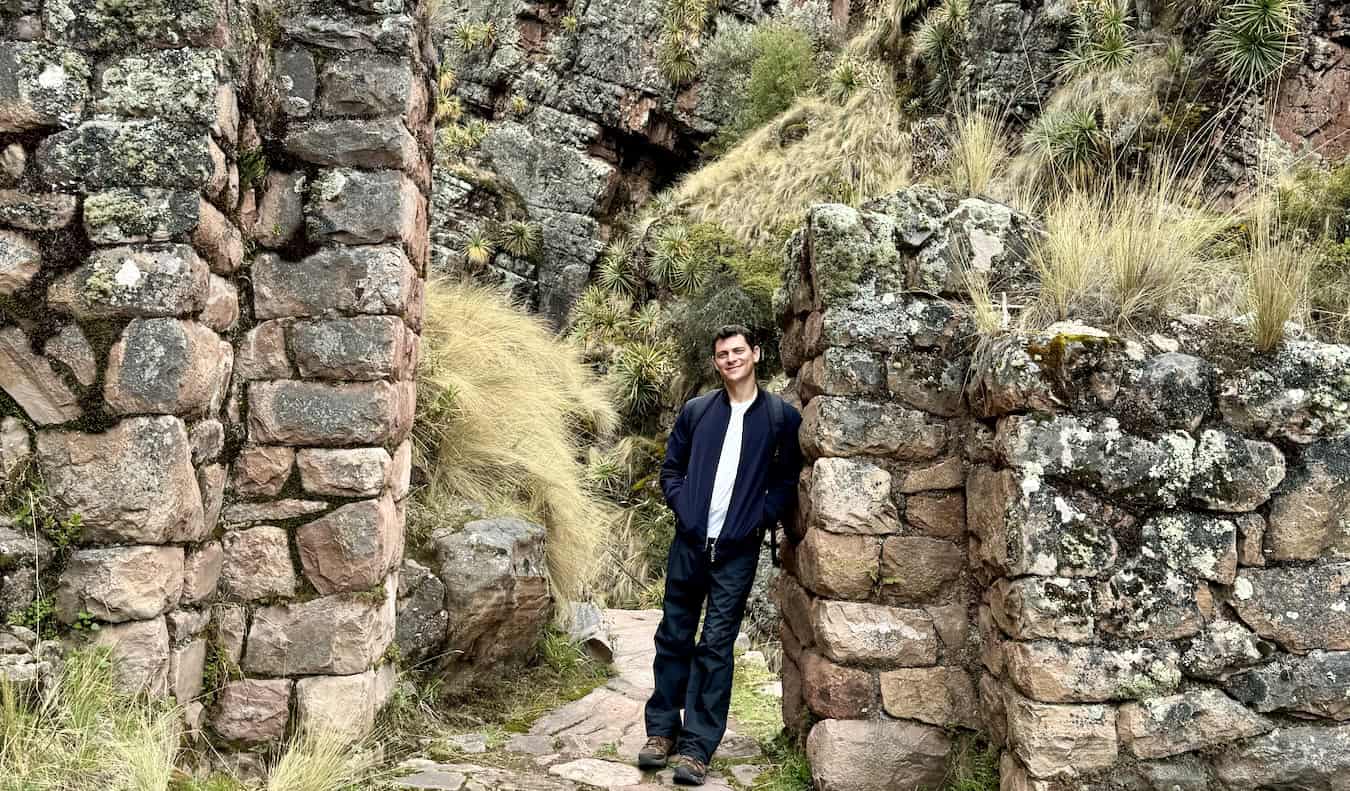
“How high is this hike again?” I asked as I panted up the mountain trail, the top seeming so far off in the distance.
“12,0000 feet,” our guide Efrain said cheerily as he and the others from the Amazonas Explorers office glided up the trail. “But it flattens out soon!” he added as a bit of encouragement.
I was skeptical.
When I first reached out to Amazonas regarding my Machu Picchu hike, I asked them to pick a route that was a little off the beaten path and could be done in a day. There are lots and lots to choose from in the Sacred Valley after all; the Incas built over 40,000 kilometers of roads through their empire, and many of them have become hiking trails.
The full-day hike selected was less traveled than others and would take us to the archaeological site called Huchuy Qosqo (“Little Cusco” in Quechua). Starting an hour outside of Cusco in the small village of Taucca, it goes over some mountains, through abandoned villages and a delightful ravine full of Incan ruins, and winds over a ridge before getting to our final destination: Huchuy Qosqo.
Beginning in the village, we hiked straight up to our first waypoint. We were at the highest altitude I had ever been in my life (higher than Machu Picchu), and, despite having been in the region for a week, I was feeling it, needing to take frequent breaks while I wheezed my way up the mountain. Thankfully, the sky was overcast and hid the sun while the gentle wind kept me cool.

But the frequent stops only made it easier to appreciate the landscape around me. The higher we went, the better views we got of the land below and the mountains around us. At this altitude, not much grows, and the barren, arid landscape kind of reminded me of the plains of Wyoming and New Zealand’s Tongariro hike. Craggy mountains unfolded as far as the eye could see and below us were villages and farms.
“The lake in front of the town is part of a hydroelectric dam,” Efrain said. “Most people here are farmers, mostly for the local market and potatoes. The bigger farms that export the food you buy in the States are elsewhere in the valley.”
After the first trail marker (is really just a telephone pole marking our first stop), the trail flattened out a bit and I got into a deep conversation about food with Patrice, one of the Amazonas employees. She had a lived in the States, so we discussed the quality of food in Peru versus the United States. (She found the food in Peru better because it was…
Click Here to Read the Full Original Article at Nomadic Matt's Travel Site…